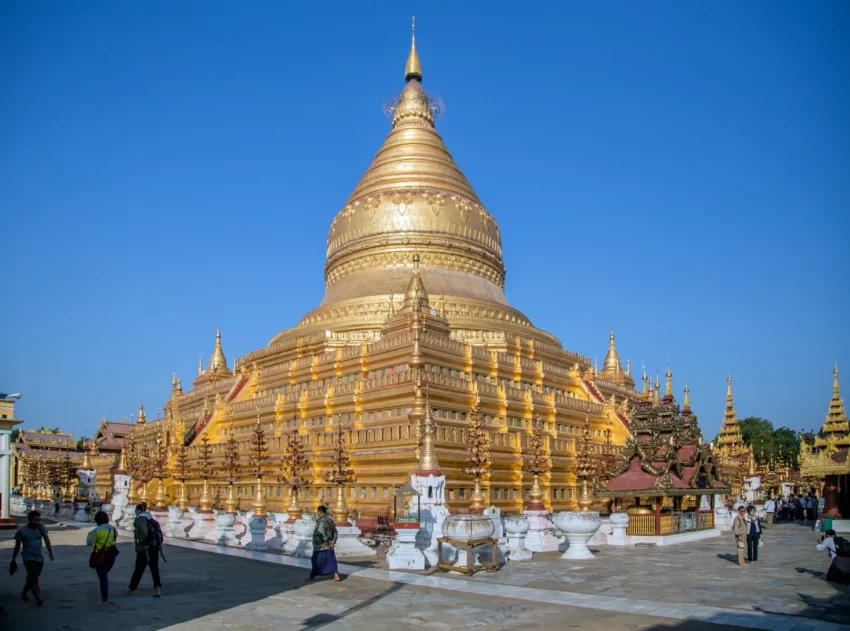Introduction to Shwezigon Pagoda
The Shwezigon Pagoda, also known as Shwezigon Paya, stands as a significant Buddhist stupa located in Nyaung-U, Myanmar. Renowned as a prototype of Burmese stupas, it features a circular gold leaf-gilded stupa encircled by smaller temples and shrines. The construction of this iconic structure commenced in 1059 AD during the reign of King Anawrahta, the founder of the Pagan Empire, and was completed in 1102 AD under the supervision of his son, King Kyansittha.
Get your dose of History via Email
Historical Context and Construction
The inception of the Shwezigon Pagoda dates back to the mid-11th century. King Anawrahta, who ruled from 1044 to 1077 AD, initiated the construction in 1059 AD. According to historical chronicles, the site for the pagoda was chosen in a unique manner; a white elephant carrying a relic of the Buddha was allowed to roam freely, and the location where the elephant stopped was selected for the construction. This site, a dune, led to the pagoda’s name, which translates to “golden pagoda on a dune.”
The construction was later taken over and completed by King Kyansittha in 1102 AD. The architectural design of the Shwezigon Pagoda was inspired by the pyramidal Mahabodhi Temple in Bodh Gaya, India, where Buddha attained enlightenment.
Architectural Features
The Shwezigon Pagoda is distinguished by its bell-shaped stupa, which is a common architectural feature in Burmese religious structures. It consists of five square terraces with a central solid core, rising steeply to form a pyramid topped with ornate umbrellas or chatris. The entire structure is gilded, and recent renovations have added over 30,000 copper plates to its exterior, although the lowest level terraces retain their original form.
Inside, the pagoda houses several relics believed to be of Buddha, including a collar-bone and a tooth, making it a significant pilgrimage site. The outer limits of the pagoda feature shrines where 37 nats (spirits) are deified, along with a wooden sculpture of Thagyamin, a representation of the Indian god Indra.
Cultural and Religious Significance
The Shwezigon Pagoda is not only an architectural marvel but also a central religious site for Buddhist devotees. It enshrines important Buddha relics and features intricate carvings and statues that depict various aspects of Buddha’s life and teachings. The pagoda’s terraces are adorned with glazed terra-cotta tiles illustrating Jataka tales, enhancing its religious and cultural significance.
Conservation and Restoration
Over the centuries, the Shwezigon Pagoda has suffered damage from numerous earthquakes and other natural calamities, necessitating multiple restorations. Notably, a significant renovation was undertaken by King Bayinnaung in the late 16th century. More recent efforts to preserve the pagoda include the reinforcement of its structure and the addition of new gilding to the dome in the 1980s and subsequent years.
Conclusion
The Shwezigon Pagoda remains a testament to the rich historical and cultural heritage of Myanmar. Its enduring beauty and spiritual significance continue to draw pilgrims and tourists alike, offering a glimpse into the ancient Buddhist traditions of the region. As efforts to preserve this ancient monument continue, the Shwezigon Pagoda stands as a symbol of the resilience and enduring faith of the Burmese people.
Sources:

